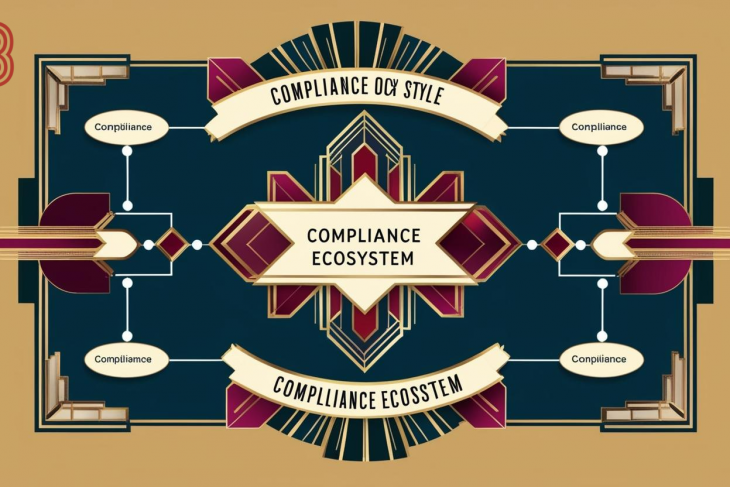
Introduction
Risk management is a fundamental component of modern financial and corporate governance. It involves identifying, assessing, and mitigating risks to ensure business continuity and regulatory compliance. In recent years, regulatory changes in risk management have reshaped how organizations manage operational, financial, and cybersecurity risks. These changes have been driven by global financial crises, technological advancements, and evolving regulatory expectations.
1. Evolution of Risk Management Regulations
1.1 Historical Context
Regulatory frameworks for risk management have evolved significantly over the past few decades. Key historical milestones include:
Basel Accords (1988, 2004, 2017):
Established risk-based capital requirements for banks.
Sarbanes-Oxley Act (SOX) (2002):
Enacted in response to financial fraud cases (e.g., Enron, WorldCom), imposing stricter corporate governance and financial reporting requirements.
Dodd-Frank Act (2010):
Introduced in response to the 2008 financial crisis, enhancing risk management and oversight for financial institutions.
GDPR (2018):
Strengthened data protection regulations, emphasizing cybersecurity and data privacy risk management.
COVID-19 Pandemic (2020-2022):
Prompted new risk management approaches in operational resilience and supply chain security.
These events have shaped the modern regulatory landscape, pushing businesses toward greater transparency, resilience, and compliance.
1.2 The Shift Toward a Risk-Based Approach
Traditional risk management was often reactive and compliance-driven. However, modern regulatory frameworks emphasize risk-based approaches that require organizations to:
Proactively identify and assess risks.
Implement preventive controls and mitigation strategies.
Use technology and data analytics for real-time risk monitoring.
Continuously adapt to emerging risks, such as climate change and cyber threats.
This transition reflects regulators’ recognition that static, one-size-fits-all rules are insufficient in a rapidly evolving business environment.
2. Key Regulatory Changes in Risk Management
2.1 Financial Risk Management Regulations
The financial sector has experienced some of the most stringent risk management regulatory changes. Key updates include:
2.1.1 Basel III and IV
Basel III, implemented after the 2008 financial crisis, strengthened capital and liquidity requirements for banks.
Basel IV (set to be fully implemented by 2028) introduces a more standardized approach to credit risk assessment and increases risk-weighted capital requirements.
These changes ensure banks have sufficient capital buffers to withstand financial shocks.
2.1.2 Stress Testing and Scenario Analysis
Regulators like the Federal Reserve (U.S.), European Central Bank (ECB), and Bank of England require financial institutions to conduct stress testing and scenario analysis to assess their ability to handle economic downturns, cyberattacks, and geopolitical risks.
2.1.3 IFRS 9 and CECL
IFRS 9 (International Financial Reporting Standard 9): Requires financial institutions to shift from an incurred loss model to an expected credit loss model, leading to earlier recognition of potential loan losses.
Current Expected Credit Loss (CECL) model:
A U.S. equivalent of IFRS 9, requiring financial institutions to estimate and provision for expected credit losses over the lifetime of loans.
These frameworks enhance transparency and risk anticipation in credit risk management.
2.2 Operational Resilience and Business Continuity Regulations
Regulators worldwide are increasing their focus on operational resilience to ensure businesses can withstand disruptions. Key developments include:
2.2.1 UK’s Operational Resilience Framework (2022)
The UK Financial Conduct Authority (FCA) and Prudential Regulation Authority (PRA) introduced a framework requiring financial institutions to:
Identify “important business services” critical to market stability.
Set impact tolerances for disruptions.
Conduct scenario testing to measure resilience.
2.2.2 EU’s Digital Operational Resilience Act (DORA) (2023)
DORA strengthens risk management in the financial sector by:
Imposing strict ICT (Information and Communication Technology) risk management requirements.
Enhancing third-party risk management, especially for cloud service providers.
Standardizing incident reporting mechanisms across the EU.
2.2.3 U.S. Federal Reserve’s Guidance on Resilience
In response to increased cyber threats and pandemic disruptions, the U.S. Federal Reserve issued guidelines emphasizing:
Robust business continuity planning (BCP).
Cyber resilience strategies.
Enhanced oversight of third-party vendors.
2.3 Cybersecurity and Data Protection Regulations
With rising cyber threats, regulatory bodies have introduced stricter cybersecurity requirements:
2.3.1 General Data Protection Regulation (GDPR)
The EU’s GDPR remains one of the most stringent data protection regulations, requiring:
Privacy-by-design principles in risk management.
Rapid breach notification within 72 hours.
Stringent data subject rights enforcement.
2.3.2 NIST Cybersecurity Framework Updates
The National Institute of Standards and Technology (NIST) updated its cybersecurity framework in 2023 to include:
Enhanced zero-trust security models.
Greater emphasis on supply chain cybersecurity risks.
Improved AI risk management guidelines.
2.3.3 SEC Cybersecurity Disclosure Rules (2023)
The U.S. Securities and Exchange Commission (SEC) mandated that public companies:
Disclose cybersecurity risks and incidents.
Report on cyber risk governance and board oversight.
These regulations push companies to integrate cybersecurity into enterprise risk management (ERM).
2.4 ESG (Environmental, Social, and Governance) Risk Regulations
Regulatory bodies are increasingly incorporating ESG factors into risk management frameworks.
2.4.1 EU Sustainable Finance Disclosure Regulation (SFDR)
SFDR requires financial firms to:
Disclose ESG risks in investment decisions.
Report sustainability-related risk exposures.
2.4.2 SEC’s Climate Risk Disclosure Rules (2024)
These rules mandate that U.S. companies:
Disclose climate-related risks in financial reports.
Conduct scenario analyses on climate risk exposure.
This shift ensures that companies factor climate risks into long-term business strategies.
3. Impact of Regulatory Changes on Businesses
3.1 Increased Compliance Costs
Organizations must invest in:
Advanced risk management technology (AI-driven analytics, cybersecurity tools).
Compliance teams and regulatory expertise.
Third-party risk management to monitor suppliers and partners.
3.2 Improved Risk Governance
Regulatory changes have pushed businesses to:
Establish risk committees at the board level.
Enhance internal risk reporting and oversight mechanisms.
Develop comprehensive risk registers and mitigation plans.
3.3 Enhanced Transparency and Investor Confidence
Stronger regulatory compliance improves stakeholder trust, as businesses demonstrate proactive risk management.
3.4 Challenges in Global Compliance
Multinational companies face:
Complex cross-border regulatory requirements.
Differences in U.S., EU, and Asia-Pacific compliance frameworks.
Challenges in aligning risk management strategies across jurisdictions.
4. Future Trends in Risk Management Regulations
4.1 AI and Machine Learning in Risk Management
Regulators may introduce AI risk governance frameworks to address:
Bias in risk assessment models.
Algorithmic transparency and accountability.
4.2 Quantum Computing and Cyber Risk Regulations
As quantum computing evolves, regulators may impose:
Post-quantum encryption requirements.
Stricter cyber resilience testing.
4.3 Expansion of Climate Risk Regulations
Expect:
Mandatory carbon emissions reporting.
Stronger greenwashing regulations.
Summary
Regulatory changes in risk management are transforming how businesses operate, ensuring greater resilience against financial, operational, and cyber threats. Organizations must adopt proactive, technology-driven, and globally aligned risk management strategies to stay compliant and competitive in an evolving regulatory landscape.




















